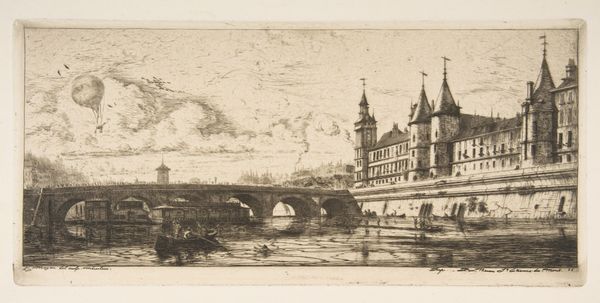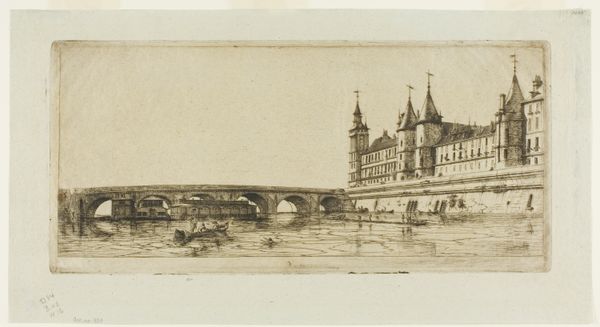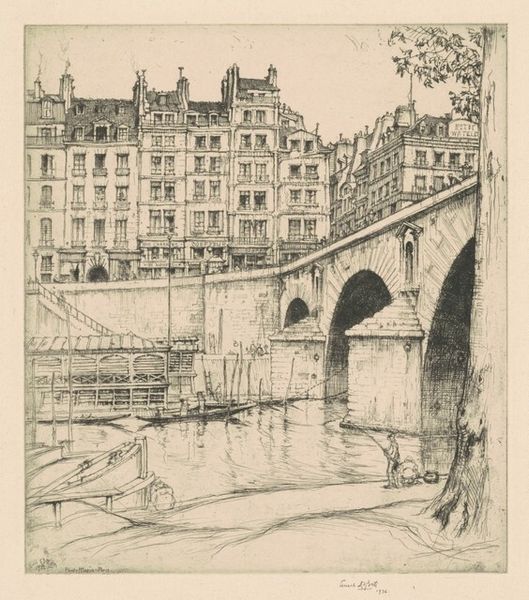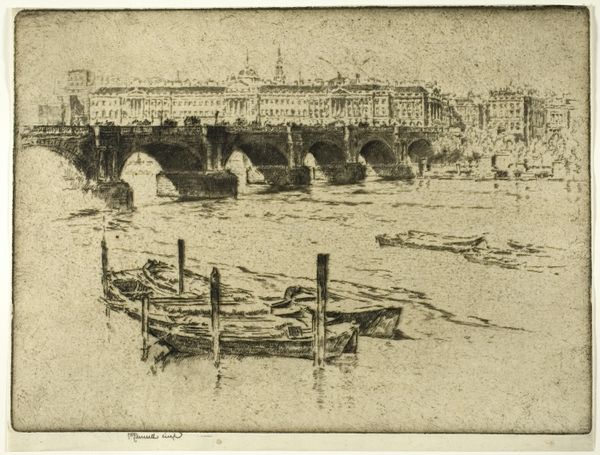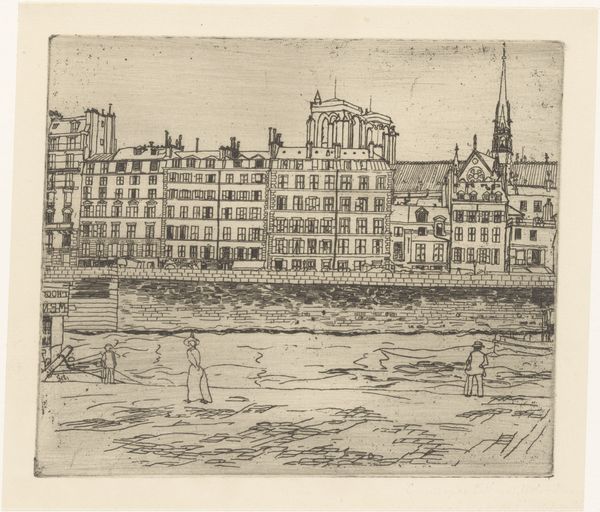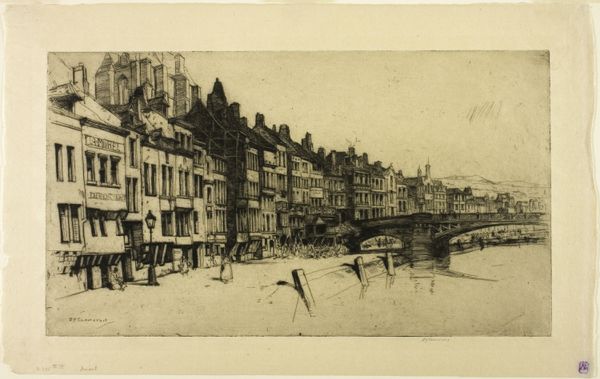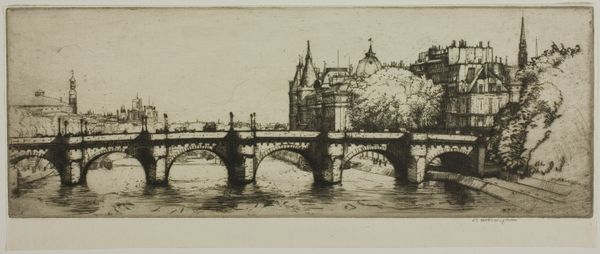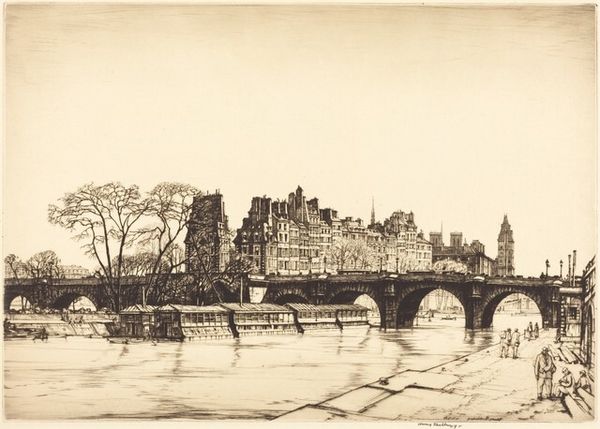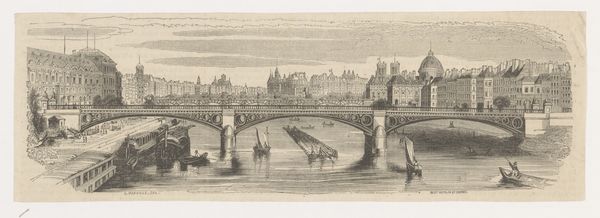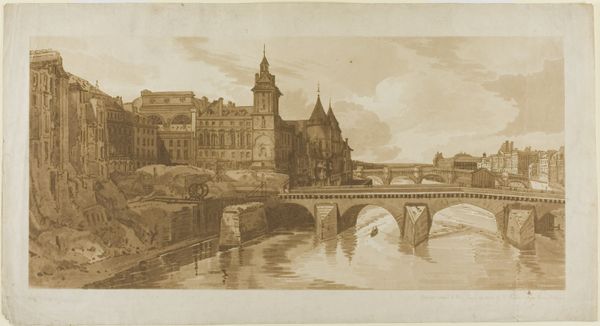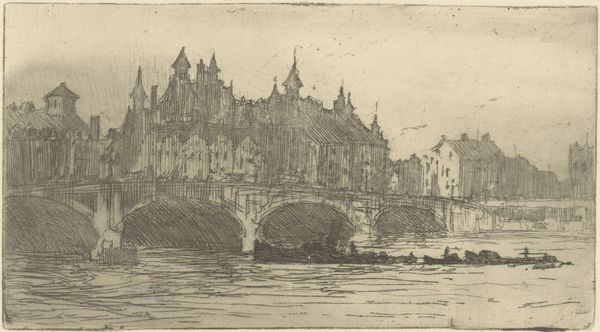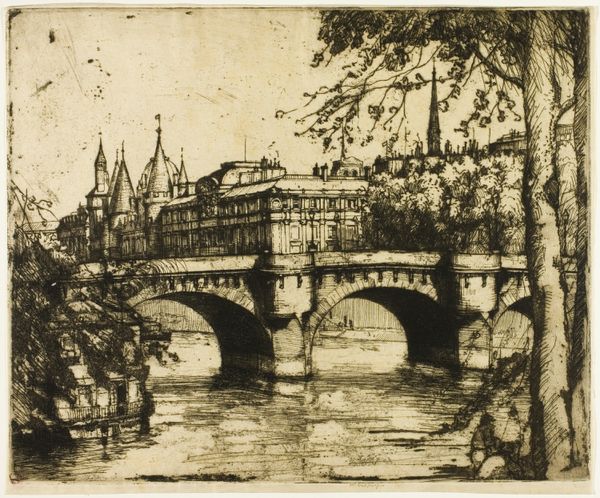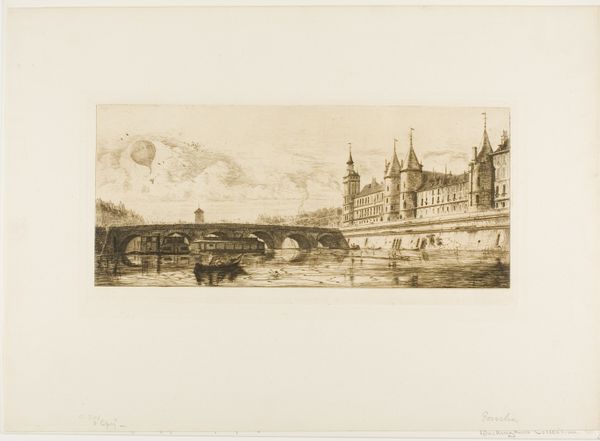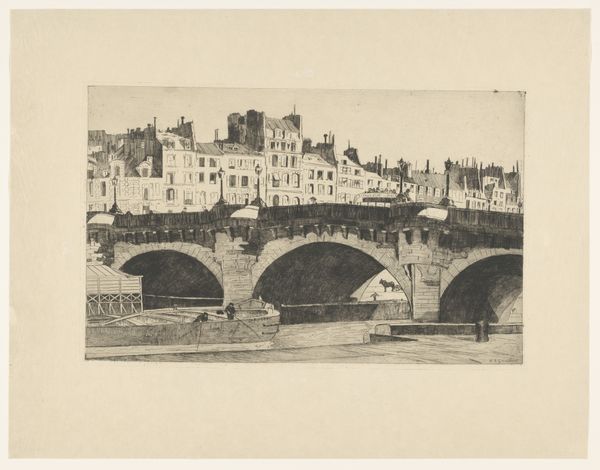
Dimensions: 150 × 302 mm (plate); 171 × 327 mm (sheet)
Copyright: Public Domain
Editor: This is David Young Cameron's "Pont Neuf, plate one from the Paris Set," an etching from 1904. It's a bustling city scene, but rendered with such fine lines it almost feels muted and dreamlike. What strikes you about this piece? Curator: What I find compelling is how Cameron situates this iconic Parisian landmark within a broader conversation about urbanization and social class. The Pont Neuf, a symbol of progress and connectivity, also represents the increasing divide between the wealthy and the working class. Do you notice the contrast between the architectural grandeur and the ordinary people traversing the bridge? Editor: I do, now that you point it out. There's a sense of distance, almost detachment, between the viewer and the people on the bridge, as if we're observing them from afar. Curator: Exactly. Cameron, consciously or not, highlights the alienation inherent in modern city life. Think about the Impressionist movement occurring at the same time. Their focus on light and fleeting moments often overshadowed deeper socio-political critiques. But here, the etching technique itself, with its precise yet fragile lines, can be interpreted as a metaphor for the delicate balance of social structures. Editor: So you're saying that the medium itself carries a message? Curator: Precisely. It's not just what is depicted, but how it is depicted. The density and intricacy of the lines might also represent the growing population density of Paris at the time. Does this reading of social tension make you reconsider your initial impression of the print's 'dreamlike' quality? Editor: Definitely. I see the "dreamlike" quality as something more melancholic now. I appreciate how this challenges me to move beyond aesthetics. Curator: And to see art as embedded within broader historical power structures and societal narratives. Editor: Thank you! It really helps seeing the connection between art, the artist and what's going on at the time.
Comments
No comments
Be the first to comment and join the conversation on the ultimate creative platform.
